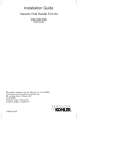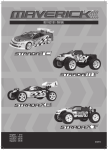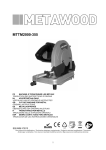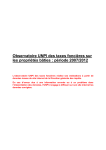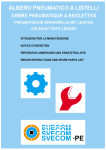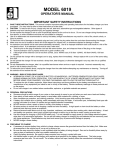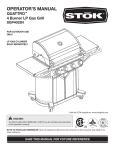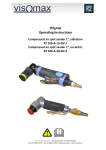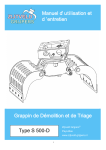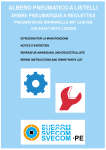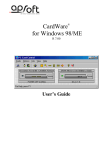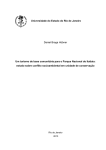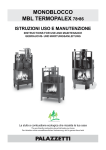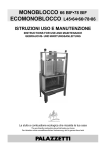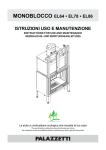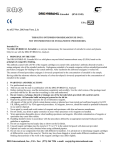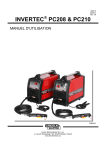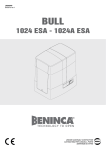Download svecom svecom svecom svecom pe
Transcript
ALBERO PNEUMATICO A CHIAVETTE ARBRE PNEUMATIQUE A TETONS PNEUMATISCHE SPANNWELLE MIT KEILEN AIR SHAFT WITH LUGS ISTRUZIONI PER LA MANUTENZIONE NOTICE D’ENTRETIEN REPARATUR-ANWEISUNG UND ERSATZTEILLISTE REPAIR INSTRUCTIONS AND SPARE PARTS LIST SVECOM SVECOM SVECOM SVECOM PE I Esaminare il tipo di albero espansibile verificando la posizione della valvola. F Individuer le type d’arbre expansible en vérifiant la position de la valve. D Untersuchen Sie die Wellenart, indem Sie die Lage des Ventils feststellen. GB Check the type of air shaft by checking the air valve position TIPO-TYPE-TYP-TYPE A TIPO-TYPE-TYP-TYPE B TIPO-TYPE-TYP-TYPE C VALVOLA - VALVE VENTIL - VALVE VALVOLA - VALVE VENTIL - VALVE VALVOLA - VALVE VENTIL - VALVE TIPO-TYPE-TYP-TYPE D TIPO-TYPE-TYP-TYPE E VALVOLA - VALVE VENTIL - VALVE VALVOLA - VALVE VENTIL - VALVE Una volta identificato il tipo corrispondente, per la sostituzione del tubo in gomma procedere come segue: Lorsque vous avez individué le type d’arbre, pour la substitution de la vessie en gomme procédez comme il suit: Haben Sie die entsprechende Art herausgefunden, ersetzen Sie das Gummischlauch wie folgt: Once identified the type of shaft, please proceed as follows to replace the rubber tube: I F D GB TIPO-TYPE-TYP-TYPE A (da pag. 10 a 13) (de pag. 10 à 13) (von Seite 10 bis 13) (from page 10 to 13) TIPO-TYPE-TYP-TYPE B (da pag. 10 a 13) (de pag. 10 à 13) (von Seite 10 bis 13) (from page 10 to 13) TIPO-TYPE-TYP-TYPE C (da pag. 14 a 15) (de pag. 14 à 15) (von Seite 14 bis 15) (from page 14 to 15) TIPO-TYPE-TYP-TYPE D (da pag. 17 a 19) (de pag. 17 à 19) (von Seite 17 bis 19) (from page 17 to 19) TIPO-TYPE-TYP-TYPE E (da pag. 17 a 19) (de pag. 17 à 19) (von Seite 17 bis 19) (from page 17 to 19) 9 AB I Sollevare il primo gruppo di chiavette e inserire dei chiodini negli appositi foretti laterali. F Soulever le premier groupe de têtons et enfiler un fil de fer dans l’orifice situé sur le côté. D Erste Keilgruppe heben und Nägelchen in die entsprechenden seitlichen Bohrungen schlagen. GB Lift the first set of lugs and insert some small rivets in the suitable side holes. I Svitare i grani di fissaggio del perno dal lato della valvola. F Dévisser les vis sans tête situées à l’extrémité de la table. D Zapfen - Befestigungsschrauben auf der Ventilseite abschrauben. GB Unscrew the fixing grains of the valve side journal. I Svitare la valvola di gonfiaggio. F Dévisser la valve de gonflage. D Ventil abschrauben. GB Unscrew the inflation air valve. I Avvitare l’asta dell’estrattore nell’apposita sede assiale al per no. (vedi disegno estrattore). F Visser la tige filetée dans le trou axial du tourillon. (voir plan de l’extracteur). D Auszieherstange in den entsprechenden Axialsitz des Zapfens schrauben. GB Screw the puller rod in the suitable seat which is located axially to the jour nal. (see puller drawing). 10 I Inserire la bussola, il tappo, la rondella e il dado. (la bussola deve far battuta sul portante). F Positionner la bague, le couvercle, la rondelle l’écrou. (la bague doit bûter sur la table). D Buchse, Deckel und Unterlegscheibe einsetzen. GB Insert the sleeve, the plug, the washer and the nut (the sleeve must touch the shaft body). I Avvitare il dado in modo tale da estrarre il perno, e con esso il tubo di gomma. F Visser l’écrou de façon à enlever le tourillon et donc la vessie en gomme. D Mutter einschrauben und Wellenzapfen zusammen mit dem Gummischlauch herausziehen. GB T i g h t e n t h e n u t s o t h a t t h e j o u r n a l i s p u l l e d o u t together with the rubber tube. I Togliere il grano e sfilare il tubo in gomma dal perno. F Dévisser la vis sans tête pour enlever la vessie du tourillon. D Befestigungsschraube abnehmen und Gummischlauch vom Zapfen trennen. GB Remove the grain and slide out the rubber tube from the journal. I Separare il tubo di gomma dai calici, svitando le viti di fissaggio centrali e togliere i coni all’inter no del tubo. F D é v i s s e r l a v i s c e n t r a l e p o u r d é s s e re r l e s c ô n e s d’étancheité et enlever les cônes à l’intérieur de la vessie. D G u m m i s c h l a u c h v o n d e n K e l c h e n t re n n e n , i n d e m Sie die mittleren Befestigungsschrauben und Konen aus Gummischlauch nehmen. GB S e p a r a t e t h e r u b b e r t u b e f r o m t h e c u p s b y untightening the central fixing screws and remove the cones from the tube. 11 I Il nuovo tubo in gomma avrà le stesse dimensioni del tubo da sostituire. F La nouvelle véssie aura les mêmes dimensions que celle de la véssie à changer. D Das neue Gummischlauch hat die Maße des zu ersetzendes. GB The new rubber tube will have the same dimensions as the one to be replaced. I Rimontare coni e calici nel nuovo tubo, assicurandosi che siano montati correttamente (vite forata e calice con O-ring dal lato valvola). F Remonter les cônes d’étancheité dans la nouvelle véssie et verifier l’étaucheité. (vis perçée du côte de la valve de gonflage. D Konen und Kelche im neuen Gummischlauch anbringen und darauf achten, daß sie richtig angebracht werden. (Lochschraube und Kelch mit O-Ring auf der Ventilseite). GB Reassemble cones and cups in the new tube and make sure that they are fitted correctly (bored screw and cup with O-ring on the valve side). I Reinserire il tubo gomma nel perno fissandolo con l’apposito grano. F Remettre la véssie en gomme à l’intérieur du tourillon et revisser la vis sans tête. D Gummischlauch im Wellenzapfen wieder hineinstecken und Befestigungsschraube anziehen GB Insert the rubber tube in the journal and fix it with the suitable grain. I Infilare il tubo in gomma nell’albero. F Introduire la véssie en gomme dans l’arbre. D Gummischlauch im Wellen-Körper hineinstecken. GB Insert the rubber tube in the shaft. 12 I Montare il perno facendo attenzione che le nicchie siano allineate con i fori. F Remonter le tourillon en alignant les empreintes de vis avec les trous filetés de la table. D Wellenzapfen anbrigen und darauf achten, daß die Vertiefungen den Bohrungen entsprechen. GB Fit the journal making sure that the seats are aligned with the bores. I Fissare i grani e togliere i chiodini dalle chiavette. F Revisser les vis sans tête puis enlever les fils de fer. D Befestigungsschrauben anziehen und Nägelchen von den Keilen abnehmen. GB Fix the grains and remove the small rivets from the lugs. ! 13 M 8 M10 M12 Ms = 20 Ms = 40 Ms = 65 Nm Nm Nm C I Sollevare il primo gruppo di chiavette e inserire dei chiodini negli appositi foretti laterali. F Soulever le premier groupe de têtons et enfiler un fil de fer dans l’orifice situé sur le côté. D Erste Keilgruppe heben und Nägelchen in die entsprechenden seitlichen Bohrungen schlagen. Lift the first set of lugs and insert some small rivets in GB the suitable side holes. A B I Togliere il grano di fissaggio del calice, togliere il seeger e sfilare il tubo gomma facendo presa sulla valvola F Dévisser la vis sans tête, enlever le circlip puis la vessie en gomme en tirant sur la valve D Kelch-Befestigungsschraube abnehmen. Seegerring abnehmen und Gummischlauch herausziehen. the fixing grain of the cup, remove the GB Remove circlip ring and slide out the rubber tube by gripping on the air valve. I Svitare la valvola . F Dévisser la valve. D Ventil abschrauben. GB Unscrew the air valve. I Separare il tubo di gomma dai calici, svitando le viti di fissaggio centrale e togliere i coni all’interno del tubo. F Dévisser la vis centrale pour désserer les cônes d’étancheité et enlever les cônes à l’intérieur de la vessie. D Gummischlauch von den Kelchen trennen, indem Sie die mittleren Befestigungsschrauben abdrehen und Konen aus Gummischlauch nehmen. GB Separate the rubber tube from the cups by untightening the central fixing screws and remove the cones from the tube. 14 I Il nuovo tubo in gomma avrà le stesse dimensioni del tubo da sostituire. F La nouvelle vessie aura les mêmes dimensions que celles de la vessie à changer. D Das neue Gummischlaugh hat die Maße des zu ersetzenden. GB The new rubber tube will have the same dimensions as the one to be replaced. I F D Rimontare coni e calici nel nuovo tubo, assicurandosi che siano montati correttamente (vite forata e calice con O-rig dal lato valvola). Remonter les cônes d’étancheité dans la nouvelle vessie et verifier l’étancheité. (Vis perçée du côté de la valve de gonflage). Konen und Kelche im neuen Gummischlauch anbringen und darauf achten, daß sie richtig angebracht werden (Lochschraube und Kelch mit O-Ring auf der Ventilseite). GB Reassemble cones and cups in the new tube and make sure that they are fitted correctly (bored screw and cup with O-ring on the valve side) I Infilare il tubo in gomma. F Introduire la vessie en gomme. D Gummischlauch hineinstecken. GB Insert the rubber tube. I b) Montare la valvola e il seeger a) Fissare il grano di bloccaggio, montare il seeger. F b) Replacer la valve et le circlip. a) Revisser la vis sans tête. D b) Ventil und Seegerring anbringen a) Befestigungsschraube anziehen und Seegerring montieren. b) Fit the air valve and the circlip ring GB a) Fix the grain, fit the circlip ring. 15 I F VALIDO PER A-B VALABLE POUR A-B VALIDO PER A-B VALID FOR TYPE A-B C NON NECESSITA DI ESTRATTORE C L’EXTRACTEUR NE SERT PAS C NON NECESSITA DI ESTRATTORE TYPE C DOES NOT NEED ANY PULLER D GB 2 5 4 3 1 12 11 13 14 4 8 7 6 9 10 I 1 2 3 4 5 6 7 8 9 10 11 12 13 14 Tubo di gomma Chiavetta Chiodino Valvola Grani di fissaggio Estrattore Dado Tirante filettato Perno dell’albero Tubo portante Grano bloccaggio calice Vite bloccaggio gomma Calice bloccaggio gomma Cono bloccaggio gomma 1 2 3 4 5 6 7 8 9 10 11 12 13 14 Vessie eu gomme Têton Fil de fer Valve Vis sans tête Extracteur Ecrou Tige filetée Tourillon (axe) Table Vis sans tête Vis centrale Cône d’etancheité Cône int. d’etancheité D 1 2 3 4 5 6 7 8 9 10 11 12 13 14 Gummischlauch Keil Nägel Ventil Befestigungsstifte Abzieher Mutter Gewindespindel Wellenzapfen Wellnkoerper Becher-Befestigungsstift Gummi-Befestigungsschraube Gummi-Befestigungsbecher Gummi-Befestigungskegel 1 2 3 4 5 6 7 8 9 10 11 12 13 14 Rubber tube Expanding lug Small rivet Air valve Fixing grain Puller Nut Threaded rod Shaft journal Shaft body Cup grain Rubber fixing screw Cup Cone 16 F GB Sequenza delle operazioni D/E • Séquence des opérations D/E • I Svitare le viti che fissano il perno dalla parte del gonfiaggio. F Du côté gonflage, enlever les vis de fixation. D Zapfen-Befestigungsschrauben auf der Ventilseite ausschrauben. GB Remove the screws which secure the journal on the inflation side. I Sfilare il perno e con esso il tubo di gomma. F Enlever le tourillon et avec lui, la vessie en gomme. D Wellenzapfen mit dem Gummischlauch herausziehen. GB Slide out the journal and the rubber tube together with it. I Fissare il perno in una morsa, svitare il calice e il tubo in gomma. F Bloquer dans un étau le tourillon ensuite dévisser le cône ainsi que la vessie. D Zapfen in Schraubstock befestigen und Kelch und Gummischlauch abschrauben. GB Put the journal in a vice, unscrew the cup and the rubber tube. I Separare il tubo gomma dai calici, svitando le viti di fissaggio centrali e togliere i coni all’inter no del tubo. F Dévisser la vis centrale pour déserrer les cônes d’étancheité et enlever les cônes à l’intérieur de la vessie. D Gummischlauch von den Kelchen trennen, indem sie die mittleren Befestigungsschrauben abdrehen, und Konen aus Gummischlauch nehmen. GB Separate the rubber tube from the cups by untightening the central fixing screws and remove the cones from the tube. 17 I Il nuovo tubo in gomma avrà le stesse dimensioni del tubo da sostituire. F La nouvelle vessie aura les mêmes dimensions que celles de la vessie à changer. D Das neue Gummischlauch hat die Maße des zu ersetzendes. GB The new rubber tube will have the same dimensions as the one to be replaced. A I Assicurarsi dell’esatto montaggio dei coni. (foto B) F Les cônes d’étancheité doivent être correctement montés et paralléles. (voir photo B). D Versichern Sie sich, daß die Konen korrekt montiert werden GB Make sure the cones are fitted properly. B I Avvitare il calice con vite forata nel lato valvola, assicurandosi di aver montato l’anello OR F Revisser le cône avec vis perçée du côté valve et remettre le joint torique. D Kelch mit gebohrter Schraube auf der Ventilseite einschrauben. Versichern Sie sich, daß der O-Ring montiert ist. GB Tighten the cup with bored screw on the valve side after fitting the O-ring. I Inserire il tubo in gomma, con il perno montato, nell’albero. F Introduire la vessie en gomme et le tourillon dans l’arbre. D Gummischlauch, zusammen mit Wellenzapfen, im Wellenkörper stecken. GB Insert the rubber tube with the journal in the shaft. 18 I Riavvitare le viti. F Revisser les vis. D Schrauben befestigen. GB Tighten the screws. ! 19 M 8 M10 M12 Ms = 20 Ms = 40 Ms = 65 Nm Nm Nm LATO COMANDO • COTE VALVE VENTILSEITE • DRIVE SIDE 50 M10 M10 ø30 50 ø30 OR 4093 LATO NON COMANDO • COTE OPPOSÉ GEGENÜBERLIEGENOE SEITE • NON DRIVE SIDE VITE/VIS SCHRAUBE/SCREW CALICE/CÔNE KELCH/CUP CONO/CÔNE INT. KONUS/CONE CONO/CÔNE INT. KONUS/CONE CALICE/CÔNE KELCH/CUP VITE/VIS SCHRAUBE/SCREW COD./CODE 317020100 COD./CODE 3040001 COD./CODE 3050001 COD./CODE 3050001 COD./CODE 3040001 COD./CODE 317020100 50 M10 M10 ø35 50 ø35 OR 4112 VITE/VIS SCHRAUBE/SCREW CALICE/CÔNE KELCH/CUP CONO/CÔNE INT. KONUS/CONE CONO/CÔNE INT. KONUS/CONE CALICE/CÔNE KELCH/CUP VITE/VIS SCHRAUBE/SCREW COD./CODE 317020100 COD./CODE 3040001 COD./CODE 3050001 COD./CODE 3050001 COD./CODE 3040001 COD./CODE 317020100 50 50 M10 M10 ø40 ø40 OR 4131 VITE/VIS SCHRAUBE/SCREW CALICE/CÔNE KELCH/CUP CONO/CÔNE INT. KONUS/CONE CONO/CÔNE INT. KONUS/CONE CALICE/CÔNE KELCH/CUP VITE/VIS SCHRAUBE/SCREW COD./CODE 317020100 COD./CODE 3040001 COD./CODE 3050001 COD./CODE 3050001 COD./CODE 3040001 COD./CODE 317020100 50 ø45 50 M10 M10 ø45 OR 4150 VITE/VIS SCHRAUBE/SCREW CALICE/CÔNE KELCH/CUP CONO/CÔNE INT. KONUS/CONE CONO/CÔNE INT. KONUS/CONE CALICE/CÔNE KELCH/CUP VITE/VIS SCHRAUBE/SCREW COD./CODE 317020100 COD./CODE 3040001 COD./CODE 3050001 COD./CODE 3050001 COD./CODE 3040001 COD./CODE 317020100 20 LATO COMANDO • COTE VALVE VENTILSEITE • DRIVE SIDE LATO NON COMANDO • COTE OPPOSÉ GEGENÜBERLIEGENOE SEITE • NON DRIVE SIDE 60 50 50 M12 M10 ø45 ø45 ø33,5 OR 4131 VITE/VIS SCHRAUBE/SCREW CALICE/CÔNE KELCH/CUP CONO/CÔNE INT. KONUS/CONE CONO/CÔNE INT. KONUS/CONE CALICE/CÔNE KELCH/CUP VITE/VIS SCHRAUBE/SCREW COD./CODE 317010120 COD./CODE 3040005 COD./CODE 3050005 COD./CONE 3100005 COD./CODE 3080005 COD./CODE 317010120 66 66 55 55 ø40 ø67 M16 M16 ø40 ø67 OR 6150 VITE/VIS SCHRAUBE/SCREW CALICE/CÔNE KELCH/CUP CONO/CÔNE INT. KONUS/CONE CONO/CÔNE INT. KONUS/CONE CALICE/CÔNE KELCH/CUP VITE/VIS SCHRAUBE/SCREW COD./CODE 317010160 COD./CODE 3040006 COD. 3050006 COD./CODE 3100006 COD. 3080006 COD./CODE 317010160 66 ø77 M16 M16 ø40 55 ø77 ø40 OR 6150 66 55 VITE/VIS SCHRAUBE/SCREW CALICE/CÔNE KELCH/CUP CONO/CÔNE INT KONUS/CONE CONO/CÔNO INT KONUS/CONE CALICE/CÔNE KELCH/CUP VITE/VIS SCHRAUBE/SCREW COD./CODE 317020100 COD./CODE 3040001 COD./CODE 3050001 COD./CODE 3050001 COD./CODE 3040001 COD./CODE 317020100 21 TUBO IN GOMMA • VESSIE EN GOMME • GUMMISCHLAÜCHE • RUBBER TUBE ø10 ø15 ø40 20146030040 ø30 20146010015 201460150022 201460350045 ø22 ø45 ø35 ø15 201460190027 201460450060 ø19 201460280029 ø20 ø60 ø45 ø27 201460550070 ø28,5 ø25 ø35 22 ø70 ø55 201460250035 DISTANZIALI IN PLASTICA • INTERCALAIRES EN PLASTIQUE • DISTANZSTÜCK • PLASTIC ø33 ANELLI IN PLASTICA A 3 PUNTE - SATELLITE EN PLASTIQUE A 3 DOIGTSDISTANZRING-3 SPITZEN - PLASTIC RING WITH 3 BITS ø85 ø31 ø48 COD. 3030004 ø79 ø31 ø49 COD. 3030005 23 ø39 COD. 3030003 ø60 COD. 3030002 ø53 ø33 ø47 COD. 3030001 ANELLI IN PLASTICA A 3 PUNTE • SATELLITES EN PLASTIQUE A 3 DOIGTS DISTANZRING - 3 SPITZEN • PLASTIC RINGS WITH 3 BITS ø80 ø31 ø49 COD. 3030005 ø84 ø31 ø53 COD. 3030007 ø80 ø31 ø53 COD. 3030008 24 ANELLI IN PLASTICA A 3 PUNTE • SATELLITES EN PLASTIQUE A 3 DOIGTS DISTANZRING - 3 SPITZEN • PLASTIC RINGS WITH 3 BITS ø84 ø42 ø62 COD. 3030009 ANELLI IN PLASTICA A 4 PUNTE • SATELLITES EN PLASTIQUE A 4 DOIGTS DISTANZRING - 4 SPITZEN • PLASTIC RINGS WITH 4 BITS ø90 ø98 COD. 3030010 ANELLI IN PLASTICA A 6 PUNTE • SATELLITES EN PLASTIQUE A 6 DOIGTS DISTANZRING - 6 SPITZEN • PLASTIC RINGS WITH 6 BITS COD. 3030008 ø132 ø92 25 LATO COMANDO • VENTIL SEITE • COTE VALVE • DRIVE SIDE COD. 311510029000000 COD. 311262621000145 OR 2025 G 3/8 G 1/8 Valvola tipo A (GD/29) - Esagono 17 Valve A (GD/29) - Exagone 17 Lufventil A (GD/29) - Sechskant 17 Air valve A (GD) - Exagone 17 14,5 29 OR 3056 Valvola tipo B (VI/145) - Esagono 11 Valve B (VI/145) - Exagone 11 Lufventil B (VI/145) - Sechskant 11 Air valve B (VI/145) - Exagone 11 COD. 311512614000000 COD. 311262620000017 OR 2025 17 14 OR 2025 G 1/8 G 1/8 Valvola tipo C (PD/14) - Esagono 12 Valve C (PD/14) - Exagone 12 Lufventil C (PD/14) - Sechskant 12 Air valve C (PD/14) - Exagone 12 Valvola tipo D (TR/17) - Esagono 11 Valve D (TR/17) - Exagone 11 Lufventil D (TR/17) - Sechskant 11 Air valve D (TR/17) - Exagone 11 OR 2025 23,5 COD. 311262619000235 G 1/8 Valvola tipo E (PT/235) - Esagono 11 Valve E (PT/235) - Exagone 11 Lufventil E (PT/235) - Sechskant 11 Air valve E (PT/235) - Exagone 11 26 CHIAVETTE • TETONS • KEILEN • EXPANDING LUGS (H) Variabile a seconda dello spessore del tubo portante. • (H) Hauteur suivant l’epaisseur du tube de la table. (H) Abhängig von der Tragrohr-Wandstärke • (H) Different depending on the body wall thickness ~ 99 H ~ 99 H ~ 99 H 27 AGENTS & DISTRIBUTORS GENERAL DRIVE DE VENEZUELA, S.A. SPAGNA Centro comerolal Bello monte, Piso 2 Caracas 1050 - Venezuela Tel. 7527208 - Fax 7511579 Telex 28176 GEDRI VC HERREKOR SL Zamoka Lantegialdea Oialume Bidea, 25 - Barrio Ergobia 20115 ASTIGARRAGA - Gipuzkoa Tel. 943 55 64 50 Fax 943 55 28 09 AUSTRALIA WEB DYNAMICS (SALES) 4/30 Lilian Fowler Place Marrickville NSW 2204 Tel. 02 516 5533 Fax 02 516 5328 BELGIO GERMANIA DEL NORD GRECIA G.M.E. SA Gob Machinery Equipments Chaussée de Stockel, 239 B - 1200 Bruxelles Tel. 02 770 46 01 Fax 02 770 00 38 PETER A. KARANDINOS P.O. Box 3551 10210 Athens - Greece Tel. 1 322 9760 Fax 1 324 9275 ENGEL INDUSTRIEVERTRETUNG Gaußstrasse 5 D - 31787 Hameln Tel. 05151 67453 Fax 05151 67463 BRASILE REGNO UNITO MACCO Josè F Bianchi Rua Fragária Rosea, 28 02945 - 000 - SÃO PAULO Tel. 0055 011 85 48 222 Fax 0055 011 26 33 936 JARSHIRE LTD. Levels House, Stoke Gardens Slough SLI 3QE Tel. 01753 825122 Fax 01753 694653 FRANCIA GERMANIA DEL SUD LAFORET DELAYE IND. ‘Le Futeau’ F - 38690 Colombe Tel. 04 76 55 99 90 Fax 04 76 55 99 91 HAMANN INDUSTRIETECHNIK Sonnenstrasse 6 D - 73230 Kirchhein/Teck Tel. 07021 3085 Fax 07021 71393 ISRAELE FINLANDIA P.B.A. WIESNER LTD. 17, Bergman St. Industrial Zone Sgula Petach Tikva 49277 Israele Tel. 03 905 21 11 Fax. 03 934 85 60 GRAAFINEN KONE OY Läkkisepantie 20 B SF - 00620 Helsinki Tel. 9 799 655 Fax 9 796 066 SVIZZERA STIREX AG Kirchbergstrasse, 107 CH - 3400 Burgdorf Tel. 0041 344 227 646 Fax 0041 344 233 894 Italy LOMBARDIA/PIEMONTE/LIGURIA CARELLI VALTER Via Luigi Einaudi,10 20013 Magenta - MILANO Tel 02 97297379 Fax 02 97950328 VENETO/FRIULI/VENEZIA GIULIA TRENTINO ALTO ADIGE DOTT. LUCIO MAZZAROL Via S. Matteo, 14 36061 Bassano Del Grappa - VICENZA Tel. e Fax 0424 30175 EMILIA ROMAGNA MAURIZIO NERI Via Parmeggiani 2/2 40131 BOLOGNA Tel. e Fax 051 522282 ITALIA CENTRALE B.F.G.& C. srl Via Pesciatina, 599 55010 Gragnano - LUCCA Tel. 0583 975878 Fax 0583 975879 ITALIA MERIDIONALE MARIO TOMMASO TANI Via Mimose ,2 00019 Tivoli ROMA Tel. 0774 330391 4- NIVEAUX DE DANGER On conseille de lire très attentivement ce manuel et en particulier cette section concernant les normes de sécurité, afin d’éviter des conduites inadéquates ou en contraste avec les instructions contenues dans le présent manuel. Faire attention au signal de danger, là où il apparaît dans ce manuel, et se tenir aux dispositions de sécurité. Les signaux de danger ici utilisés sont de deux niveaux: ! AVERTISSEMENT DANGER Ce symbole signale que si les opérations décrites ne sont pas correctement exécutées, elles risquent d’endommager l’Arbre ou les matériaux enroulés. Ce signal est valable pour toutes les opérations décrites ci-après, même s’il n’est pas indiqué pour chacune d’entre elles. Ce signal indique que si les opérations décrites ne sont pas correctement exécutées, elles risquent de causer de graves lésions, la mort ou des risques à long terme pour la santé. La firme SVECOM - P.E. décline toute responsabilité pour les dommages directs ou indirects causés par l’inobser vation de normes de sécurité et de prévention des accidents décrites ci-après. 5- UTILISATION SURE • Il est absolument interdit d’utiliser ou de faire utiliser l’Arbre à quiconque n’aurait pas complètement lu, compris et assimilé parfaitement les instructions du présent manuel et du manuel d’emploi et de maintenance de la machine dont l’Arbre est un composant. • Il est absolument interdit de toucher ou de s’appuyer sur l’arbre pendant la rotation. • L’Arbre est construit exclusivement pour l’enroulement et le déroulement de matériau en bobine. • Il est obligatoire de positionner la/les bobines de matériau enroulé sur l’Arbre suivant le schéma de chargement de projet, communiqué à SVECOM - P.E. par document écrit et avalisé par celle-ci. 6- MAINTENANCE SURE Pour garantir la maintenance sûre de l’Arbre, il est indispensable d’observer les prescriptions suivantes: • La maintenance de l’Arbre ne doit être effectuée que par le personnel qualifié et spécialisé, suivant les instructions fournies dans le présent manuel. • La maintenance doit être scrupuleusement exécutée, conformément aux instructions contenues dans le présent manuel, et en faisant remplacer les pièces endommagées ou usées. • Toutes les opérations de levage de l’Arbre doivent être exécutées manuellement si la masse de l’Arbre est inférieure à la limite établie ou à l’aide d’élingues adéquates et conformes aux Lois du Pays où les susdites opérations sont exécutées. • Ne pas effectuer de soudures, ni de découpages au chalumeau ou avec un outil, ni de trous sur la structure de l’Arbre. * Utiliser toujours des pièces détachées originales en cas d’interventions de dépannage et de maintenance. • Pour les opérations de vissage de goujons et de vis, se servir de la clé dynamométrique étalonnée sur les valeurs indiquées dans le texte. • Mémoriser et conser ver, pendant toute la durée de vie de l’Arbre, le présent manuel d’emploi. 4 4- LEVELS OF DANGER We recommend giving your full attention to this manual and to this section on safety standards in particular. This will help to avoid actions that are undesirable or are in contrast with the instructions contained in this manual. Pay attention to the danger signal when it is illustrated in this manual. Comply with safety regulations. Danger signals used in this manual have two different meanings: ! WARNING DANGER This symbol warns that if the operations described are not correctly performed this can cause damage to the Shaft or to the materials being reeled. This signal is applicable for all the procedures described below even if it is not specifically indicated for each of them. This signal warns that the operations that are described, if they are not correctly performed, can cause severe harm, death or long term health risks. SVECOM - P.E. declines all responsibility for direct or indirect damage caused by failure to comply with the safety and accident prevention regulations described in the following paragraphs. SVECOM - P.E. also declines all responsibility for damage caused by improper use of the Shaft and/or following modifications to it that were not authorized by the manufacturer. 5- SAFE USE OF THE SHAFT • It is prohibited to use or have the Shaft used by anyone who has not fully read, understood and perfectly assimilated the contents of this manual and of the operating and maintenance manual for the machine where the Shaft is fitted. • It is absolutely prohibited to touch or rest against the Shaft during rotation. • The Shaft is built exclusively for reeling and unreeling materials in reels. • It is mandatory to position the reel(s) of material wrapped on the Shaft according to the project loading schema communicated to SVECOM - P.E. in a wr itten document and approved by this latter company. 6- SAFE MAINTENANCE It is necessary to comply with the following regulations in order to guarantee safe maintenance of the Shaft: • Maintenance on the Shaft must only be done by qualified and specialized personnel according to the instructions given in this manual. • Maintenance must be done with care, following the instructions contained in this manual and replacing damaged or worn components. • Any Shaft hoisting procedure must be done by hand if the mass of the Shaft is below the preset limit, or by suitable slings that conform to the Laws of the Country where hoisting takes place. • Never make weldings, flame or tool cuts or holes in or on the Shaft structure. • Always use genuine spare parts when performing maintenance and repair. • Use a torque wrench and the torque values indicated in the text when tightening dowels and screws. • Memorize the contents of this Instruction Manual and preserve it for the entire working life of the Shaft. 8 4- LIVELLI DI PERICOLO Si consiglia di leggere molto attentamente questo manuale ed in particolare questa sezione, che riguarda le norme di sicurezza, evitando comportamenti inopportuni o in contrasto con le istruzioni contenute nel presente manuale. Fare attenzione al segnale di pericolo, dove riportato, in questo manuale ed attenersi alle disposizioni di sicurezza. I segnali di pericolo qui impiegati sono di due livelli: ! AVVERTENZA PERICOLO Questo simbolo avverte che se le operazioni descritte non sono correttamente eseguite, si possono causare danni all’Albero o ai materiali avvolti. Questo segnale vale per tutte le operazioni descritte di seguito anche se non riportato per ognuna di esse. Questo segnale avverte che se le operazioni descritte non sono correttamente eseguite, possono causare gravi lesioni, morte o rischi a lungo termine per la salute. La SVECOM - P.E. declina ogni responsabilità per danni diretti o indiretti causati dalla mancata osservanza delle norme di sicurezza e di prevenzione infortuni di seguito descritte. La SVECOM - P.E. declina inoltre ogni responsabilità per danni causati da un uso improprio dell’Albero e/o a seguito di modifiche eseguite senza autorizzazione del costruttore. 5- USO IN SICUREZZA • È assolutamente vietato usare o fare usare l’Albero a chiunque non abbia letto completamente, compreso ed assimilato perfettamente quanto riportato nel presente manuale, e nel manuale d’uso e manutenzione della macchina di cui l’Albero è un componente. • È assolutamente vietato toccare o appoggiarsi all’albero durante la rotazione. • L’Albero è costruito esclusivamente per l’avvolgimento e lo svolgimento di materiale in bobina. • È obbligatorio posizionare la/le bobine di materiale avvolto sull’Albero secondo lo schema di carico di progetto, comunicato alla SVECOM - P.E. con documento scritto e da questa avvallato. 6- MANUTENZIONE IN SICUREZZA Per garantire la manutenzione in sicurezza dell’Albero è indispensabile rispettare le seguenti prescrizioni: • La manutenzione dell’Albero deve essere effettuata solamente da personale qualificato e specializzato, seguendo le istruzioni riportate nel presente manuale. • La manutenzione va eseguita scrupolosamente, seguendo le istruzioni contenute nel presente manuale e facendo sostituire le parti danneggiate o usurate. • Eventuali operazioni di sollevamento dell’Albero vanno eseguite manualmente se la massa dell’Albero è inferiore al limite stabilito, o con imbracature idonee e conformi alle Leggi del Paese dove avvengono le suddette operazioni. • Non effettuare saldature, tagli alla fiamma o con utensile o fori sulla struttura dell’Albero. • Usare sempre negli interventi di riparazione e manutenzione ricambi originali. • Per le operazioni di avvitamento di grani e viti fare uso della chiave dinamometrica tarata ai valori richiamati nel testo. • Memorizzare e conservare per tutta la durata di vita dell’Albero il presente Manuale istruzioni d’uso. 2 4- GEFAHRSTUFEN Es wird empfohlen, dieses Handbuch und insbesondere den Abschnitt, der die Sicherheitsvorschriften betrifft, aufmerksam zu lesen um so ein unangebrachtes oder nicht den Anweisungen, die im vorliegenden Handbuch enthalten sind, entsprechendes Verhalten zu vermeiden. Beachten Sie das Gefahrenzeichen, wo es in diesem Handbuch aufscheint und halten Sie sich an die Sicherheitsvorschriften. Hier werden zwei Stufen von Gefahrenzeichen verwendet: ! VORSICHT GEFAHR Dieses Zeichen warnt davor, daß eine unkorrekte Ausführung der beschriebenen Tätigkeiten die Welle oder das umwickelte Material beschädigen werden kann. Dieses Zeichen gilt auch für alle in der Folge beschriebenen Tätigkeiten, auch wenn es nicht jedesmal wiedergegeben wird. Dieses Zeichen warnt davor, daß eine unkorrekte Ausführung der beschriebenen Tätigkeit schwere Verletzungen, Tod oder eine lang anhaltende Gefahren für die Gesundheit zur Folge haben kann. Die Firma SVECOM - P.E. weist jede Verantwortung für direkte oder indirekte Schäden zurück, die durch Nichtbeachtung der in der Folge angegebenen Sicherheitsvorschriften sowie der Vorschriften zur Vorbeugung von Unfällen entstehen. Die Firma SVECOM - P.E. weist außerdem jede Verantwortung für Schäden zurück, die durch einen nicht sachgerechten Gebrauch der Welle und/oder in der Folge von Veränderungen, die ohne die Bewilligung des Herstellers ausgeführt wurden, entstehen. 5- ANWENDUNG IN SICHERHEIT • Es ist strengstens verboten, die Welle zu betätigen oder betätigen zu lassen, wenn das vorliegende Handbuch sowie die Gebrauchsanweisungen und Instandhaltungsvorschriften der Maschine, von der die Welle ein Bestandteil ist, vorher nicht ausführlich gelesen und der Inhalt völlig verstanden und aufgenommen wurde. • Es ist strengstens verboten, während der Rotation die Welle zu berühren oder sich auf sie zu stützen. • Die Welle wurde ausschließlich für das Auf- und Abwickeln von Materialien auf Spulen konstruiert. • Es ist Pflicht, die mit Material umwickelte/n Spule/n nach dem Belastungsschema des Plans zu positionieren, der der Firma SVECOM - P.E. mit einem schriftlichen Dokument mitgeteilt und von ihr bestätigt wird. 6- WARTUNG IN SICHERHEIT Um eine sichere Wellenwar tung zu garantieren, ist es unerläßlich, die folgenden Vorschriften zu beachten: • Die Welle darf nur von qualifiziertem und Fachpersonal gewartet werden, wobei die Anweisungen, die im vorliegenden Handbuch stehen, befolgt werden müssen. • Die Wartung der Welle muß gewissenhaft ausgeführt werden, wobei die im vorliegenden Handbuch stehenden Anweisungen befolgt sowie die beschädigten oder abgenutzten Teile ersetzt werden müssen. • Das eventuelle Aufheben der Welle muß manuell erfolgen, wenn das Gewicht der Welle unter der festgesetzten Grenze liegt oder mit Schlingen, die geeignet sind und den Gesetzen des Landes entsprechen, in dem die obengenannten Tätigkeiten durchgeführt werden. • Auf der Struktur der Welle nicht schweißen, brennschneiden, mit Werkzeug schneiden oder Löcher bohren. • Bei den Reparatur- und Wartungsarbeiten immer originale Ersatzteile verwenden. • Beim Einschrauben von Dübeln und Schrauben muß ein Drehmomentenschlüssel verwendet werden, der auf die im Handbuch angegebenen Werte eingestellt ist. • Das vorliegende Handbuch mit den Gebrauchsanweisungen für die ganze Lebensdauer der Welle aufbewahren und den Inhalt im Gedächtnis festhalten. 6

























